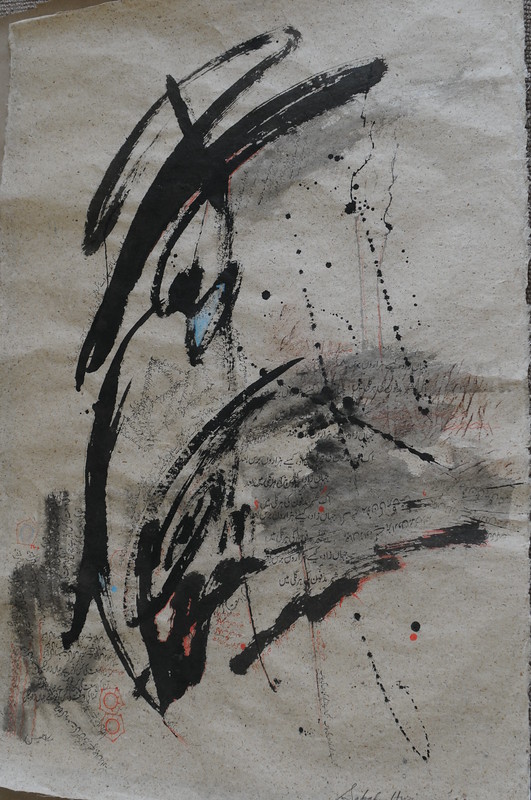N. M. Rashed in the Art Gallery
A few people contacted me recently to tell me about a gallery show of Sabah Husain at the Koel Gallery in Karachi. The show was titled ʿPoetics of Memoryʾ, and engaged with the poetry of N. M. Rashed, particularly the long four-part poem Hasan Kuzahgar (Hasan the Potter).
This poem is central to Rashed's oeuvre and legacy. I have discussed it in extensively in the conclusion of my book, I Too Have Some Dreams, in relation to four major themes—embodiment, position without identity, allegory and collectivity, and temporality. There I describe it is as follows:
Many critics consider it to be one the greatest statements about love and creativity in Urdu poetry, the masterpiece of Rashed’s late period, and among the finest free-verse poems in the language. The poem is a monologue in which the potter Ḥasan addresses the mesmerizing Jahāñzād (literally “daughter of the world”). Each section is set in a different time and place, and each is a variation on a single theme. As such, it resembles a pot, being made and remade. Altogether, the poem narrates Hasan’s transformation.
As Sabah Husain‘s show attests, that poem remains a favorite of Urdu-speaking artists, potters and printmakers alike. Her work engages with selections of the poems text, as well its imagery. For The Friday Times the artist explained,
Rashid talks about Hassan’s inspiration from the rainbow and its seven colours, butterflies and his lover’s face. So I have these as almost pictographs. I want the text, the pictograph and the paper made from the plant fibre, warm and sensuous, to work in unison in these series […] And I have taken the liberty of using lines from all his four poems on Hassan Koozagar and combining them randomly, emphasising certain strains in the poem […] sometimes repeating a word to show its many literary and visual dimensions.
The show consisted of a paper collages called the “Baghdad Manuscripts”—Hasan Kuzahgar takes place in Baghdad and Allepo—as well as a series of paper boats evocative of both Lahore's Ravi River and the Tigris of Baghdad, another important site for Hasan's story. As Sabah Husain notes, the collages involve excerpts from the poem.
Sabah Husain picks up on some Rashed’s most memorable phrases in her artwork, such as my favorite, the shahr-e madfūn (buried city), which occurs a few times within this work with different significances.
It is exciting to see, once again, the interpenetration of literary and artistic circles in Pakistan.
Recent reviews of the show are by Amra Ali (Dawn) and Raza Rumi (The Friday Times).
The slideshow can be viewed below, but do click on the image to zoom in and see the details of the works.

Comments